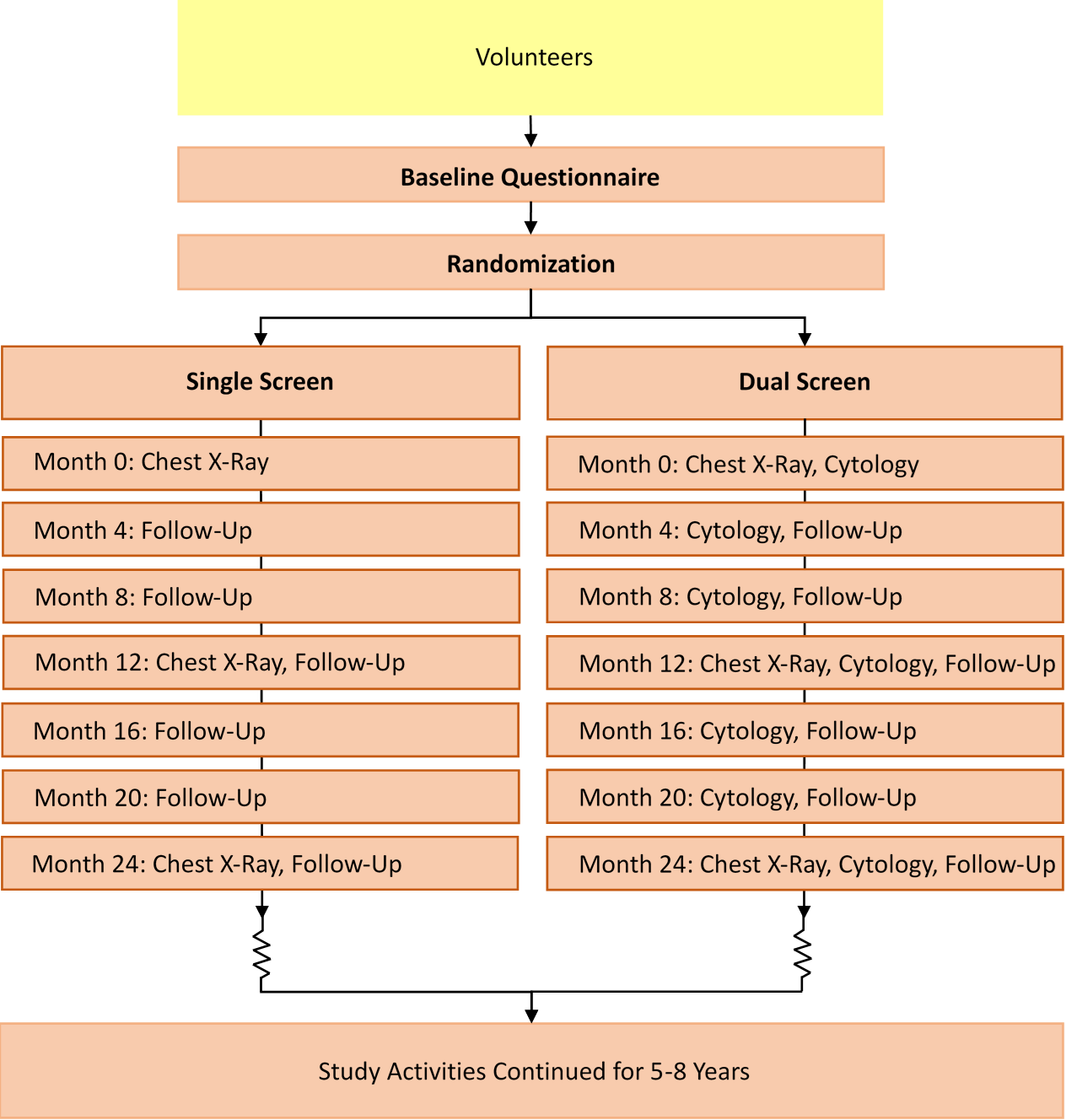Summary
The Memorial Sloan-Kettering Lung Study (MEM) was a randomized screening trial designed to test if lung cancer
mortality rates could be reduced through the addition of regular cytomorphological screening of sputum to an
annual chest x-ray screening regimen. The reported lung cancer mortality rates were similar between the two
arms indicating the additional cytological screening did not result in a benefit. The follow-up of participants
was of limited duration.
Study Years:
- Enrollment: June 10, 1974 to January 10, 1978
- Screening was phased out, starting in January 1982 and ending October 31, 1982.
- Participants were screened for five to eight years, depending on date of enrollment.
Randomized trial with two arms:
- Arms
- Control: Single-Screen: Annual Chest X-Ray Only
- Intervention: Dual-Screen: Annual Chest X-Ray and four-monthly sputum cytology
Study Eligibility:
- Ages Eligible for Study: 45+ Years
- Sexes Eligible for Study: Male
- Smoked at least one pack of cigarettes per day (or this much within one year of enrollment)
- No history of respiratory tract cancer
Enrollment
Enrollment: 10,040
- 5,072 in Control: Single-Screen
- 4,968 in Intervention: Dual Screen
Total Study Population Demographics (10,040 Randomized and Eligible People):
- Age (years):
- Mean: 53.83
- Range: 41-85
- Median: 52
The Schema is a timeline of the study. It indicates start/end points, visits expected, major testing to be done, and any other information that is crucial to understanding how the study was completed.
Schema Description
Volunteers are recruited for the study. First, they complete a baseline questionnaire.
Next, they are randomly assigned to either the single screen study arm or dual screen study arm.
Participants in the single screen arm receive a chest x-ray annually, starting at baseline and
continuing for 5-8 years. Over the same time period, they receive follow-up at four month intervals.
Participants in the dual screen arm receive a chest x-ray annually and a cytology evaluation at four
month intervals, starting at baseline and continuing for 5-8 years. Over the same time period, they
receive follow-up at four month intervals.


